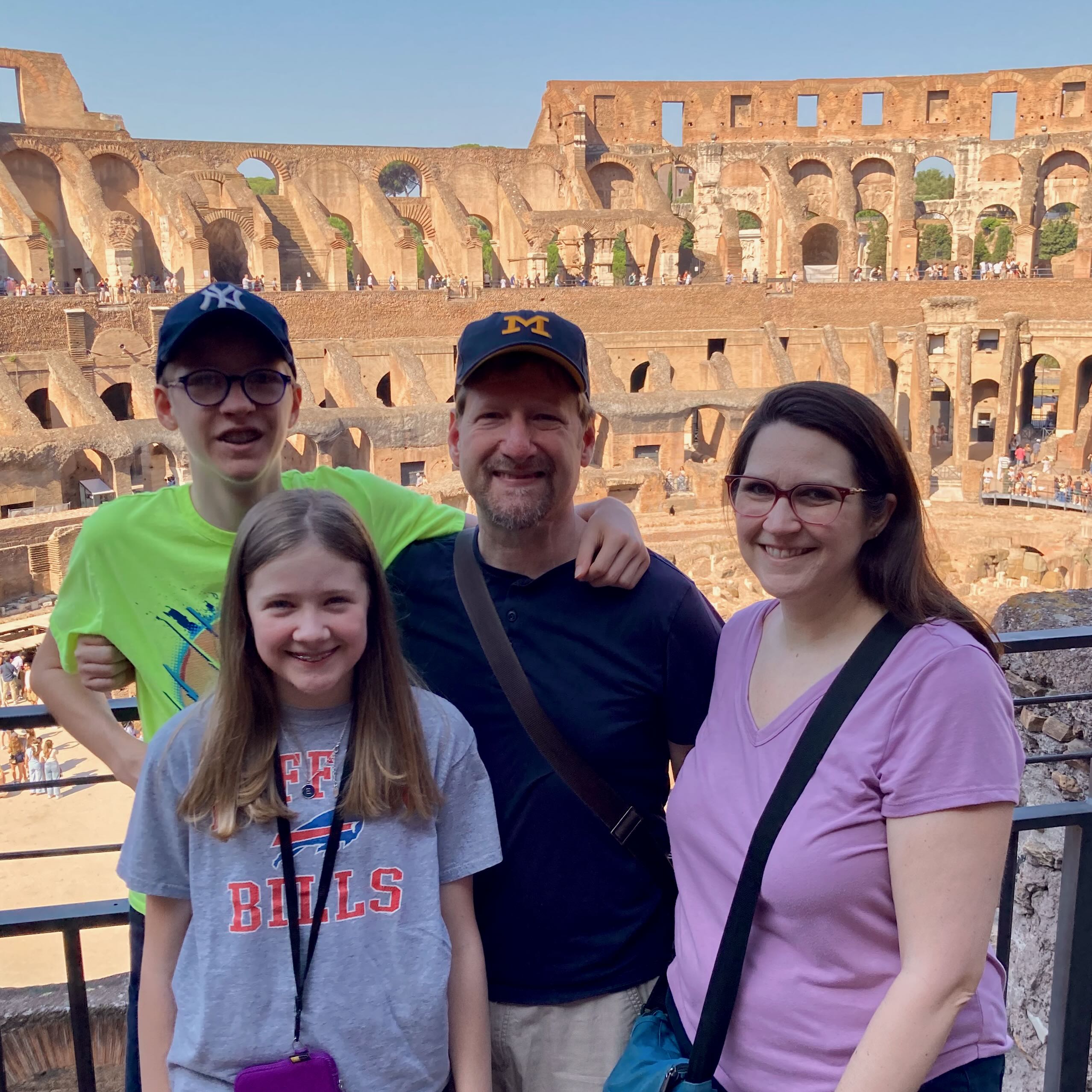Here are the most frequently asked questions about Christmas in Italy.
When and how long is Christmas?
How do they decorate for Christmas?
What about the Christmas tree?
What do they eat for Christmas?
Do they have any traditional Christmas songs?
When and how long is Christmas?
Christmas in Italy goes only for twelve days from December 24th through January 6th.
Traditionally, the first day of Christmas really is Christmas, not Christmas Eve, because the celebrations started with midnight mass. In some parts of Italy they do celebrate with a very special dinner, but most people celebrate Christmas day.
Christmas day is spent with family. In fact, they have a saying: “Natale con i tuoi, Pasqua con chi vuoi”, which translated means: “Christmas with your family, Easter with whoever you like.”
The day after Christmas is also very important. It called “Santo Stefano” (Saint Steven), In English we have a reminder of the festivity in the first line of the song Good King Wenceslas: “Good King Wenceslas looked out, on the Feast of Stephen,…”
The last day of Christmas is the Epiphany, January 6th, – day that celebrates the arrival of the magi to bring gifts to the King. It is also called the day of the “Befana” because a “good” witch visits children, complete with broom and a bag full of gifts. Good children receive sweets, but bad children receive coal!
Today Christmas in Italy has become more commercialized as in many parts of the United States and Europe. There are many Christmas lights and bells ringing.
How do they decorate for Christmas?
They are not big on decorating their houses for Christmas, but even the smallest of towns will have festive Christmas lights adorning the streets, and most likely a Christmas star on top of the church’s bell tower. Most people today will have a Christmas tree and a Presepe (see the following discussion).
What about the Christmas tree?
Traditionally the Italian people did not know much about Santa Claus, or holly or Christmas trees.
Italians do have Christmas trees now, though in the past they were more into the Nativity scene. Legend has it that the nativity scene, (alternately presepe, presepio or crèche) was invented by Saint Francis near here in Assisi in the early 1200s.
These nativity scenes, which are very elaborate, going beyond the Biblical story to depict medieval peasant scenes, with hundreds of people gathered to worship the holy family.
Though Italians traditionally have celebrated a “religious” Christmas, this does not mean that they celebrate a Christ-filled Christmas.
The traditional image of Christmas is of the “perpetual Virgin” Mary (Madonna), holding the helpless Christ-child (Gesù Bambino). Gesù Bambino was the one who would bring gifts to children.
Mary, however always grasps people attention, and is celebrated and prayed to in their Christmas masses. She and the saints are asked to intercede on behalf of the people, who in their view are not worthy to approach God or Jesus directly.
People pay offerings to light candles, which are supposed to help their dead family members to move more swiftly from purgatory to heaven.
What do they eat for Christmas?
Every region of Italy differs in their specialty. On the coast they prefer dishes that have fish in them. In Umbria, where we live, women start days before Christmas preparing cappelletti, a fresh pasta filled with meat and usually served in a meat broth.
Often a cappone, a kind of chicken, is used for the broth. Pasta al forno (pasta cooked in the oven) is also very popular.
The most famous Pasta al Forno of course is Lasagna!
Traditional desserts vary by region, but some of the most common ones are Panettone (fruit cake), Pandoro and Torrone. Chocolate is also very prevalent today, especially for us, since Perugia is home of the most famous Italian chocolate factory.
Do they have any traditional Christmas songs?
The most traditional Christmas song in Italy is “Tu Scendi dalle Stelle“. Here are the translated words (from http://en.wikipedia.org/wiki/Tu_scendi_dalle_stelle)
From starry skies descending,
Thou comest, glorious King,
A manger low Thy bed,
In winter’s icy sting;
O my dearest Child most holy,
Shudd’ring, trembling in the cold!
Great God, Thou lovest me!
What suff’ring Thou didst bear,
That I near Thee might be!
Thou art the world’s Creator,
God’s own and true Word,
Yet here no robe, no fire
For Thee, Divine Lord.
Dearest, fairest, sweetest Infant,
Dire this state of poverty.
The more I care for Thee,
Since Thou, o Love Divine,
Will’st now so poor to be.
Traditionally it is sung with the accompaniment of a zampogna, which is the Italian version of a bagpipe.








